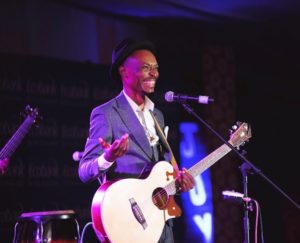Arts Education and Creativity in the Malawian Arts Industry
Malawi is a small landlocked country in Sub-Saharan Africa with a population of over 18 million. Over the years, the country has made tremendous strides in developing its educational systems.
In many communities of Malawi, music, dance and oral storytelling, locally known as Nthano, are integrated into everyday life, crossing social and cultural boundaries. These are most popular in the rural communities of the country. Just like in many parts of Africa, most Malawians know and enjoy cultural songs and dances, which share a cultural heritage. This culture has contributed to creating a platform for the growth of the arts in the country even though this culture is not generally perceived as an expression of art.
The State of Arts Education in Malawi
Malawi has a rich and diverse cultural heritage, which is a great foundation for the arts and arts education to blossom. The country has a conducive environment for creativity in literature, poetry, music, drama, choreography and fine arts. For Malawi, progress has been made to embrace arts education, however, it has been gradual. I only got introduced to arts education when I went to university in 2008. Today, most students (as young as 3 years old) are exposed to the arts in reception classes (similar to pre-K in the United States), especially in metropolitan areas.
Culture is part of what has shaped art in Malawi. Having worked in most rural communities of Malawi, I have encountered untapped skills and unutilized potential in the arts. This potential has the power to grow the arts industry and transform arts education if arts education can be embraced in Malawi schools and communities. Through pure force of will, passion, determination and persistence, artists in Malawi have and continue to create opportunities that contribute to the growth of the Malawian arts industry.
Malawian Arts Industry: Meet Lawi
 Francis Phiri, widely known as Lawi, is a popular Malawian artist whose music reflects and represents Malawian culture and has become a great contributor to African music. As a musician, Lawi often uses his songs to promote positive change, including songs that advocate for young girls, girls’ education and youth in Malawi.
Francis Phiri, widely known as Lawi, is a popular Malawian artist whose music reflects and represents Malawian culture and has become a great contributor to African music. As a musician, Lawi often uses his songs to promote positive change, including songs that advocate for young girls, girls’ education and youth in Malawi.
As an artist, Lawi believes a few factors have led to the growth in the industry. He believes that the young generation has mastered the use of new technology and the internet to make their contribution to the industry. This has widened the spectrum exposing not only new talent and skills but also methods of how processes can be made shorter while realizing the best results. He further states that there is a hunger to bridge the gap between generations which contributed to the loss of valuable cultural information that went undocumented. Examples of this lost cultural information are folktales, dances, food recipes, musical instruments and their style of play, as well as visual artistic expressions.
Digitization of previously recorded material presently available at the national archives, as well as the national broadcaster (Malawi Broadcasting Corporation), can help reveal more about Malawi’s historical background. Through that information, a roadmap can easily be developed for future generations. It’s high time Malawi gets intentional about the direction of arts education, which will help the development of support systems and structuring of departments within the arts sector. With technology, there may be a need for more training and the establishment of arts education centers, which can also help improve unemployment in the country through scholarships to the skilled young population domiciled in rural communities.
The Malawian arts industry is worth many millions of dollars. If the right structures and policies are put in place, the contribution will be immeasurable. The Malawian arts industry has the power to not only attract foreign investment but greatly boost tourism which inevitably supports the economic status of the country.



